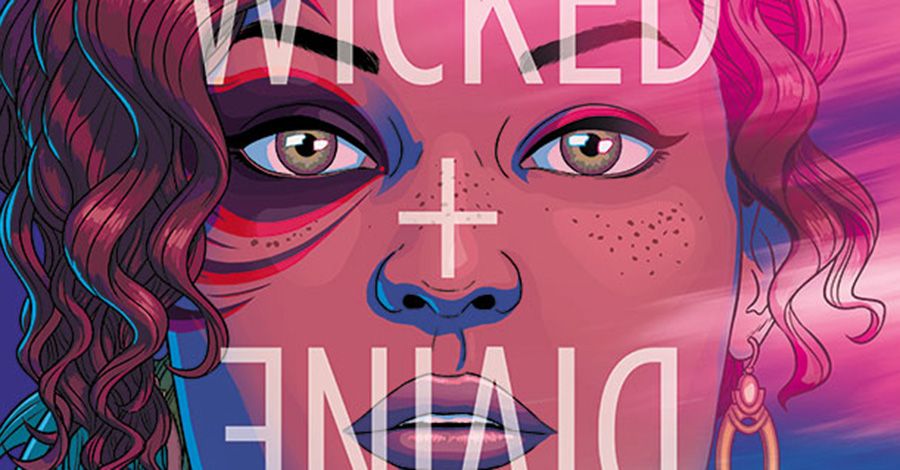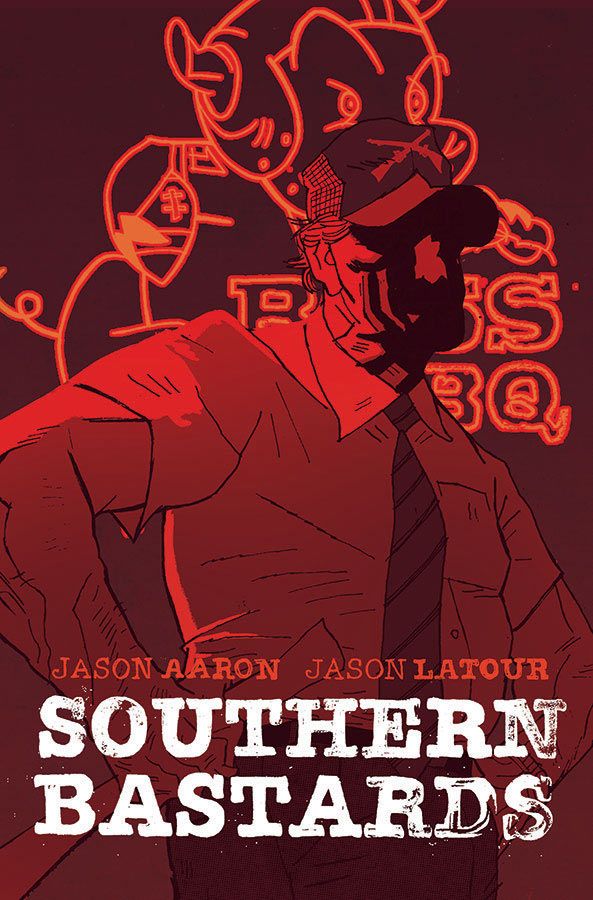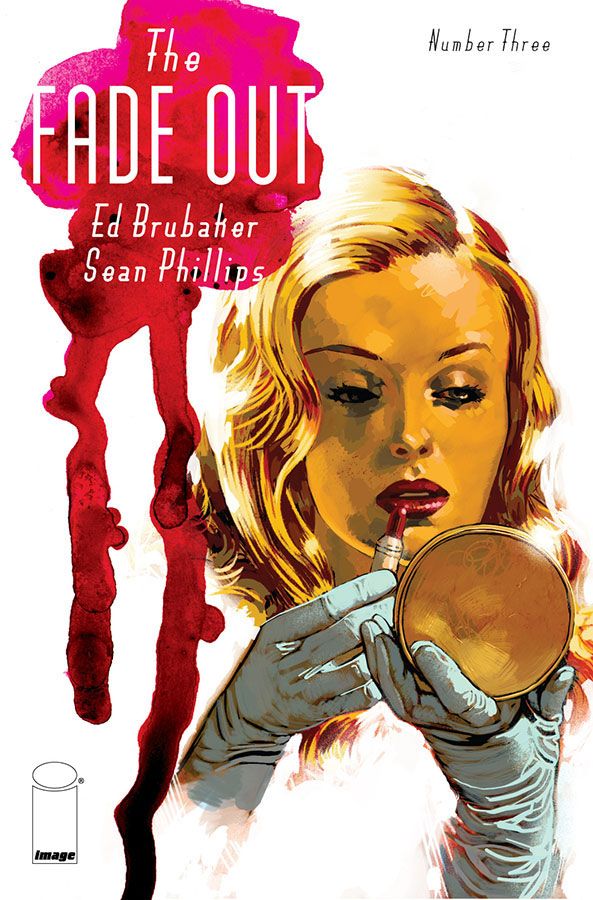Some of Image Comics' most well-known artists came together at Thought Bubble 2014 to discuss their work in comics. With the writers away, the panel gave the audience a look at their side of the collaborative process in creator-owned comics. From digital working to the importance of the colorist, it was a quick-paced panel, filled with interesting ideas and stories.
Moderated by Image Publisher Eric Stephenson, the panel included Tula Lotay ("Supreme: Blue Rose"), Jamie McKelvie ("The Wicked + The Divine"), Emma Rios ("Pretty Deadly"), Jason Latour ("Southern Bastards"), Charlie Adlard ("The Walking Dead") and Sean Phillips ("The Fade Out").
Stephenson began the panel by asking Phillips about his collaborations with writer Ed Brubaker, with whom he now works exclusively. Phillips said that they've been working together since 1999, meaning this has been their fifteenth year of making comics. He trusts Brubaker to just write him good material, and in return has the freedom to draw that script in the way he wants.
Adlard, similarly, has a long working relationship with Robert Kirkman on "The Walking Dead", which they've been together on for eleven years now. "That's a whole lot of Robert Kirkman!" he said. Over time, they've gotten used to working together, and how the other operates. He agreed that the downside is that there is less time for other projects, but Stephenson picked up on that to mention "Passenger," a 48-page story co-published by Image and French publisher Delacourt, for which Adlard is waiting on the last five pages of Kirkman's script.
The first 43 pages have been scripted -- and drawn by Adlard -- but the last five are still waiting. The project was recently mentioned again at Comic-Con International 2014, and Adlard hopes that means that work has started on finishing off the script.
Stephenson asked McKelvie if he'd been exclusively working with Kieron Gillen in the same way, and the artist mentioned work he'd done with people like Matt Fraction and Warren Ellis, but that he keeps getting pulled back in to new projects with his "Phonogram" co-creator. They don't work in shorthand with each other -- "The scripts are long." -- but they live in the same city and speak to each other every day. They've been working together since 2003, when Gillen first approached his table at a convention and said straight away "I have this comic called 'Phonogram' -- like to draw it?"
On the other hand, Latour has worked on several projects, with different artists and for himself. "I'm promiscuous," he said. A while back he felt like he'd never work with a writer again, and would only draw his own work -- but then Jason Aaron approached with a concept for "Southern Bastards" and he was tied to him. The concept took a while to come together for the pair, but they enjoy the collaborative aspect of storytelling on the book. Latour said that working with Aaron made him more sympathetic in his own writing -- when working on something like "Wolverine & The X-Men," he keeps the artist/writer dynamic in mind. He compared working on comics to being in a band, where there's a give and take at work, which can be equally rewarding and frustrating at times.
Stephenson continued that idea of comics being a band ethic, especially in the realm of creator-owned comics. Latour said that, in this case, that made him "a hillbilly jug-band."
The conversation then turned to Emma Rios, who said that in Spain, artists have more importance in comics than writers. She used to write and draw her own comics, but realised the easiest way to get in at Marvel and DC would be as an artist. Her second project was with Kelly Sue DeConnick on "Osborn" and they immediately started talking about the idea of doing a creator-owned book. They had an immediate connection, but just had to find the right moment.
Rios said she was happy to be doing something where she had total freedom. She's able to change things from the scripting at times, to give her a little air to breathe, and "Pretty Deadly" has been organic in the way they both develop the story together at the same time.
Lotay -- also known as Thought Bubble organizer Lisa Wood -- is the newest artist at Image Comics. The offer to work with Warren Ellis came after a portfolio review at the festival. It seems Stephenson, seeing her work, told her to put more focus on it, and put her in contact with Ellis. The pair discussed ideas about what they wanted to do together, and one say he suggested "Supreme: Blue Rose".
According to Lotay, Ellis is a writer who gives the artist freedom to do whatever they want, and is happy to let them change panels and sequencing around. She'll be starting work on issue #6 of the seven-part miniseries later this month, and would love to keep working with Ellis after the project ends. "We have such a good working relationship," she said.
Discussing what drew her to the comics medium, Lotay said that her dad used to take her to the local market, where they sold comics about to be pulped. She'd buy huge collections of "Daredevil" and "Judge Anderson." Comics were the medium that helped her learn to read and understand text.
Latour followed up on the point, saying that his dad hadn't been a huge comics reader. In fact, the only comic he ever saw his dad read was "about sniper rifles." He did have a shortbox of comics, however, and in particular he mentioned reading a story which put Hulk against Machine Man. On the strength of that story, he bought "Machine Man" #1, and his mother fostered that interest in reading. His dad, he remembered, would come home from work with paper and pencils for him to use.
He started showing his portfolio at conventions from the age of 12, and had his first portfolio review when he was 16. "It only took 18 more years to be published!" he said.
Following up on the idea of a physical portfolio, Stephenson asked the panel if they still used paper for their work. McKelvie said that he hadn't used paper in four years, and Phillips said he was all-digital with "The Fade Out," having taught himself how to use it. Adlard still uses paper, but said he'd just got a Cintiq. He told the audience that "The Walking Dead" will always be drawn on paper, but he'd also be practicing with digital for other projects in the future.
Phillips said next year's new volume of "Criminal" will also probably be done on paper, to keep in with tradition -- all the previous volumes have been on paper in the past. Discussing the use of digital, McKelvie said that he found it easier to zoom in on the little details. "It's like CSI-vision," agreed Latour. McKelvie said he'd deliberately deleted some of the intervals below 50% on his system, just so he couldn't be tempted into going into too much detail. But the best thing about working digitally is "I don't have to scan pages anymore!"
After the panel transitioned to audience Q&A, they discussed working with writers, the level of artistic creative control and detail in scripts. Lotay said that it varies with each project. Whilst Ellis explains something in one sentence and leaves her to get on with it, her pages for "Bodies" with Si Spencer were different, as he goes into more detail. She enjoyed working on both, but there are different ways in which writers work.
Adlard continued on that thread, relating a story from his time on "The Walking Dead," when he had to draw a double-page splash of the zombies. In the page notes, Kirkman wrote, "Make this the best panel you have ever drawn in your life." "And I did!" Adlard said, laughing. Phillips, who also worked with Kirkman for "Marvel Zombies," had a similar story. Kirkman wrote, "Have fun!" on a splash page of zombies. "Have Fun is the most annoying phrase!" Phillips said.
Some of the artists and writers collaborate over long distances -- even across countries, which prompted a fan to ask about "long-distance relationships." (It made Latour to wonder if he was actually married to Jason Aaron.) According to Phillips, the collaboration is easier thanks to email. The first five years working with Ed Brubaker, everything was done via an editor, and they didn't actually speak to one another. Even now, years can go by without the pair seeing each other in person.
Adlard said the plan with Robert Kirkman was to Skype every fortnight. Sometimes they manage that, and sometimes not. They keep in regular email contact, where possible. Phillips added, "As long as there is silence, you know everything is fine." It's if you receive corrections and changes that you know something is up.
"Unfortunately, Jason Aaron and I were friends in real life before we worked together," Latour said. Reading all of Aaron's work, Latour would sometimes call him and say, "I think your artist really dropped the ball with this story." They talk frequently in real life, and call each other often -- "More than I think Jason would like, sometimes."
Rios said that she and Kelly Sue DeConnick were very close friends. They talk every day -- not just about "Pretty Deadly," but just catching up in general. She felt that they were each inspiring to the other, and that "one of us is always aspiring to be the other." Phillips noted that writers were the first and most important audience to an artist.
Another important collaborator to an artist is their colorist, which Jamie McKelvie was uniquely positioned to discuss as the panel wrapped. McKelvie has worked with Matt Wilson since "Suburban Glamour" in 2011. He sends Wilson links to reference images, as the clothing worn by the characters is all sourced by McKelvie. Beyond that, all he sends are notes on what time of day each scene is in, where the lighting is, and similar details. "I don't have to tell him a lot, because he's amazing," said McKelvie.
The idea for "The Wicked + The Divine" was treating fight scenes "as though they were a gig," and a lot of that comes purely from Wilson's colors. Rios has also worked frequently with a single colorist: Jordie Bellaire. Rios likewise only has to give a few details regarding the story in advance, as Bellaire tends to follow the storytelling perfectly, "more than anything else."



